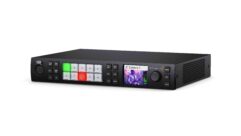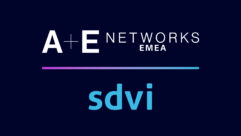
E-Paper Catches Fire
Electronic paper is designed to be highly flexible, and e-paper manufacturers are turning out to be equally flexible when it comes to improving their products.
Electronic paper is designed to be highly flexible, and e-paper manufacturers are turning out to be equally flexible when it comes to improving their products. At least that’s the impression of some attendees from the Society for Information Display (SID) conference, held May 20-25 in Long Beach, Calif.Need for SpeedGrowing Pains
“Every supplier of e-paper technology [at SID] showed significant progress in terms of, for example, contrast ratio, brightness, speed, and color,” says Jacques Angele, vice president of advanced technology and system architecture at Nemoptic, a flexible-display vendor just outside of Paris.
One example is Seoul, Korea-based LG.Philips LCD, which used SID to show off what it claims is the world’s first 14.1-inch color display using e-paper technology. Another is E Ink of Cambridge, Mass., which showed a prototype display that supports what it calls “smooth color video.”
Those achievements are noteworthy for pro AV, because although e-paper is focused on small, text-heavy applications such as electronic newspapers, vendors and analysts say it’s only a matter of time before the technology scales up into applications such as digital signage and video walls. If that pans out, it would give AV pros another alternative to incumbent display technologies, such as plasma and LCD flat-panel displays.
One catch is price: As a newcomer, e-paper still carries a premium, simply because it hasn’t had time to develop a market large enough to start driving down its overhead costs.
“Today, printed paper costs about $4 to $5 per square foot,” says Angele. The flexible-display technology “typically is five to 20 times higher. To divide the price by two or three for e-newspapers, I think it’s perhaps three years, something like that. For larger displays, of course the time will be longer because of the technology, which is more complex.”
Although electronic paper is practically synonymous with plastic, the technology can be paired with stainless steel instead. One reason is durability. Because it’s flexible, plastic is inherently vulnerable to scratches. For applications where the display is likely to get dinged up, such as a bar, stainless steel may be a better option.
Want More?
For more information about flexible displays, check out:
- Nempotic’s Web site at www.nemoptic.com/content.php?section=technology&id=5, which includes white papers describing how its technology works.
- E Ink’s Web site at www.eink.com/technology/index.html, which provides an overview of its technology and links to companies – such as Samsung and Sony – that license it.
- The FlexDisplaysNews blog at http://flexdisplaysnews.wordpress.com, which includes links to press releases and articles about technology breakthroughs and product announcements.
- AV Intelligence: “Fascinating Facts about electronic paper,” May Pro AV
- What’s Next: “Printing Flexible Displays. With organic semiconductors and inkjet printing, Xerox PARC looks to create cheap, flexible displays,” March 2005
- What’s Next: “The Paper Chase. Electronic paper vendors see color as one way to grab a bigger share of the booming digital signage market,” January 2005
- What’s Next: “Electronic Ink Writes Its Future. Market watchers predict the technology may one day eliminate the need for paper in signage applications,” July 2003
The terms “flexible display” and “e-paper” often are used interchangeably and as catch-all terms to describe a wide variety of technologies. One type is “electrophoretic,” where small particles reside in a liquid. When electricity is applied to the liquid, the particles move to form text, images, or both by revealing a dark or light side, depending on their location in the display.
That sounds straightforward, and it is, at least when electrophoretics is used to create text and static images. Video is trickier, because it means moving those particles as fast as possible. As a result, support for video and a good viewing experience, such as no smeary images, are two ways vendors can differentiate their flexible displays.
“I’ve seen some demonstrations from E Ink that are pretty close to video,” says Robert Street, a senior research fellow at Palo Alto Research Center (PARC), a Xerox subsidiary that’s developing flexible electronics, including those that can be used in e-paper. “They’re at around 30 Hz. They’ve been making good progress, because three or four years ago, it was more like 5 Hz. So it may be that it’s only a couple of years before there’s full video.”
For vendors, video is a brass ring worth reaching for — it opens the door to a bigger market, including digital signage.
“This clearly is a competitive advantage,” says Nemoptic’s Angele. “I think most display technology will be able to achieve video. It’s easier for some than others.”
So far, e-paper vendors are focused on small applications, ranging from cell phone screens to electronic books and newspapers. Even so, there are already a few reasons for AV pros to keep an eye on e-paper.
One is that as prices for e-books and e-newspapers drop, their sales volumes increase, giving vendors more money to plow into research and development on scaling up the technology. (Bigger displays have bigger profit potential.) As electrophoretics and other flexible-display technologies become viable for increasingly larger applications in areas such as digital signage, they create competition for incumbents such as LCD and plasma, potentially driving down prices.
Large, flexible displays eventually could create opportunities for AV pros in markets such as events, replacing plastic trade show banners, for instance, with e-paper that loops the logos of show sponsors.
“There is a trend toward larger displays,” says Jennifer Colegrove, senior analyst for display technology and strategy at iSuppli, a research firm in El Segundo, Calif.
PARC shares that view. “The display industry always has tended to start small, and then work up,” says Street, who manages the Electronics Materials and Devices Laboratory’s Large Area Systems unit at PARC.
The same can be said of companies developing flexible displays. Once the province of startups, the market now includes major display vendors such as LG.Philips LCD.
“I do see a lot of large, established companies starting R&D on flexible displays,” says Colegrove. “One example is Samsung.”
As the flexible display industry matures, exits and acquisitions are likely to become more common, as was the case with Gyricon, a PARC spinoff in Ann Arbor, Mich. Gyricon closed in late 2005, apparently a victim of a problem that often plagues young companies in brand-new industries: delayed return on investment.
“They went under,” says Street. “I think that the primary reason was that markets weren’t growing fast enough to keep investors happy.”
Young companies that have proven flexible display technology but struggle to sell it could become acquisition targets for major vendors looking for a way to enter the market without the time and expense of developing their own technologies from scratch. Major vendors often have the resources to wait for a new market to find its legs, which is what the flexible display space is still doing: The worldwide market was worth $5 million in 2006 and will grow to $82 million by 2010, iSuppli predicts. By 2013, the firm expects revenue to hit $339 million, an 83 percent compounded annual increase over 2006.
Some investors apparently aren’t dissuaded by having to wait until the next decade for a payoff. In January, Cambridge, U.K.-based Plastic Logic raised $100 million in financing, which it’s using to build what it calls the first factory to manufacture plastic electronics on a commercial scale. To put that figure in perspective — and, in the process, some investors’ outlook for flexible displays — $100 million is one of the largest financing hauls in the history of European venture capital, and 20 times more than the entire industry’s revenue in 2006. The bottom line: There’s a lot of paper — in the form of money — being sunk into e-paper.
Tim Kridel is a Columbia, Mo., freelance writer and analyst who covers telecom and technology. He can be reached at [email protected].










